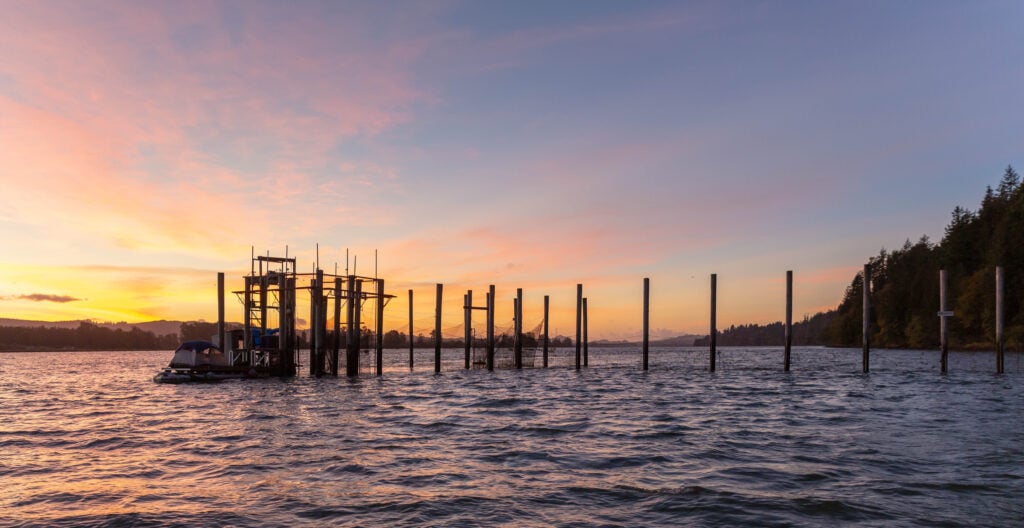
Below you’ll find reports and publications, downloadable data sets, and other information describing each of Wild Fish Conservancy’s fish trap research projects conducted on the lower Columbia River since 2016.
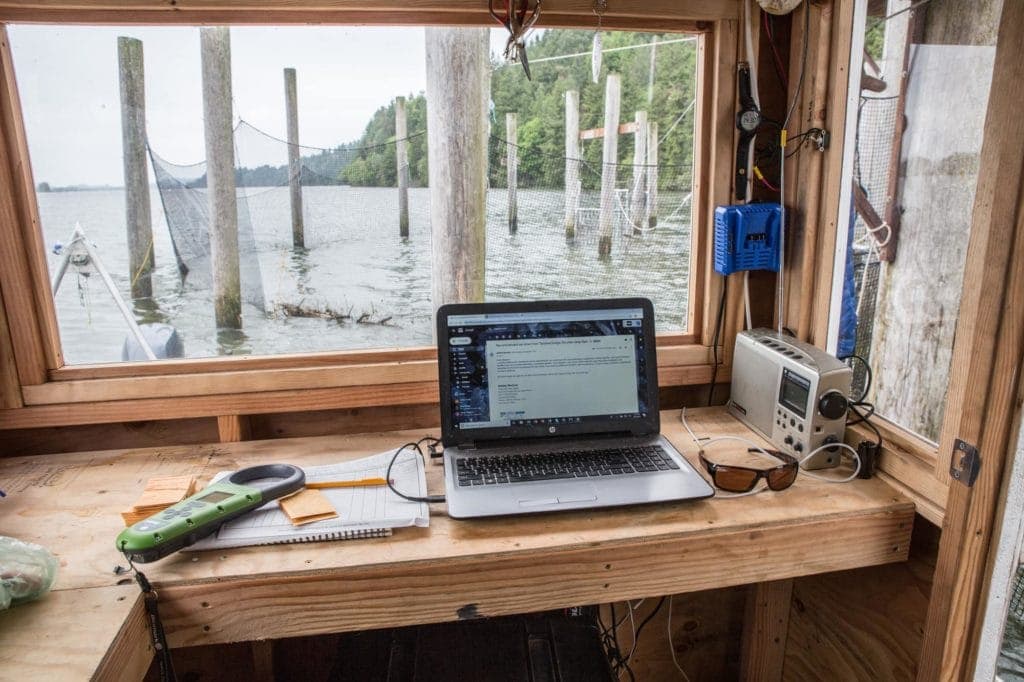
All fish trap research data are publicly available in machine-readable format (excel.csv) below. Click on the dropdown arrow below to view downloadable data sets.
These data and related items of information have not been formally disseminated by NOAA, and do not represent any agency determination, view, or policy.
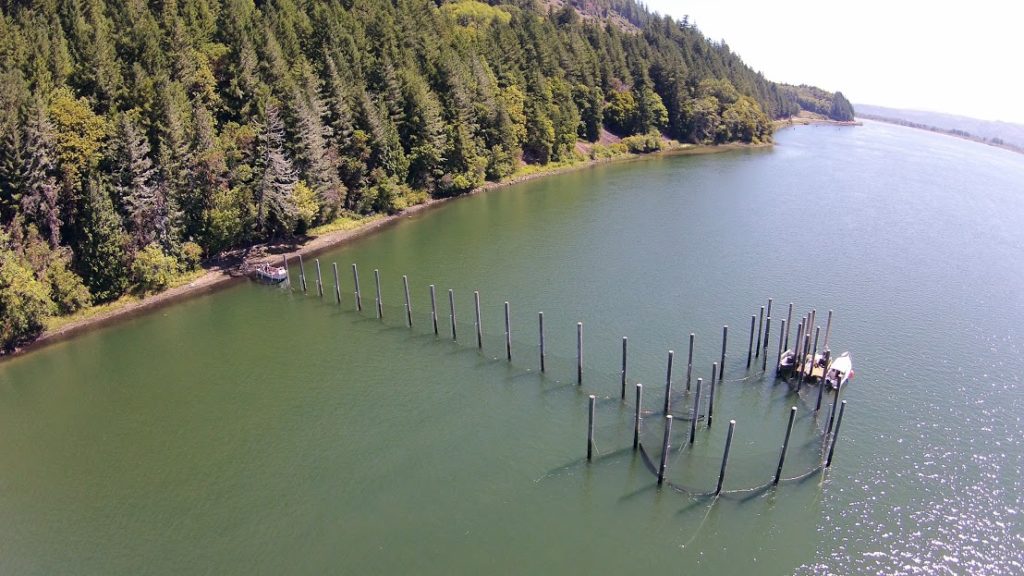
To develop an innovative and effective fishing technology for the reduction of bycatch and hatchery impacts to ESA-listed salmonids and benefit of U.S fisheries, WFC designed, constructed, and monitored the performance of a modified fish trap in the lower Columbia River from 2016-2017 with local commercial fisherman Jon Blair Peterson. Specifically, objectives were to determine the effectiveness of the gear in capturing hatchery-origin Chinook and coho salmon and reducing post-release and cumulative mortality of wild fall Chinook salmon and summer steelhead trout relative to the performance of previously tested commercial gears in the lower Columbia River. Environmental and biological covariates, CPUE, capture conditions, bycatch, immediate survival, and post-release survival of fish were assessed. Similar to previous alternative gear tests, this study intended to achieve three major goals:
Assessing CPUE from the experimental trap and employing the Cormack (1964)-Jolly (1965)-Seber (1965) method for estimation of survival through paired mark-release-recapture, this study investigated the effectiveness of the alternative gear in capturing targeted stocks with improved survivorship of released fishes relative to previously tested commercial gears. Providing precise and unbiased estimates of cumulative survival to fisheries managers may enable implementation of low-impact stock-selective harvest and/or research tools for the rejuvenation of working waterfronts and the reduction of bycatch and hatchery impacts to wild salmonids.
This project received funding under award #NA17NMF4720255 from NOAA Fisheries Service, in cooperation with the Bycatch Reduction Engineering Program. The project was also funded through the Washington Coastal Restoration Initiative and Patagonia Provisions. The statements, findings, conclusions, and recommendations within the report and publication are those of the authors and do not necessarily reflect the views of the funders.
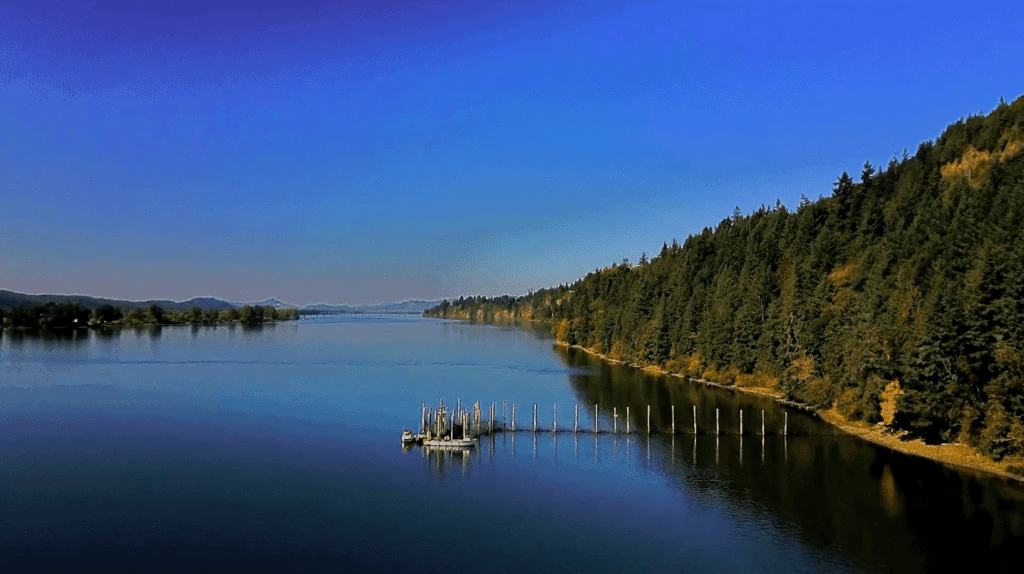
A commercial trap fishery was established in the lower Columbia River for the first time in over 83 years by the Washington Department of Fish and Wildlife (WDFW) in collaboration with WFC, local commercial fishermen, fish processors, and fish buyers to evaluate the feasibility of the gear in a commercial setting for mark-selective harvest. Specifically, objectives of the test fishery were to determine the economic potential of a mark-selective commercial trap fishery and estimate ecological impacts. Total harvest, revenue, bycatch, CPUE, and immediate survival were assessed in lower Columbia River late-summer and fall fisheries from August through October 2018. The test fishery was established to achieve the following goals:
Evaluating revenue generated and estimated wild salmonid fishery mortalities, we compared results from the experimental trap fishery to that of the conventional lower Columbia River mainstem gillnet fishery. Ultimately, this information can be used by fishermen and resource managers to determine the feasibility of mark-selective salmon trap fisheries and the potential benefits of transition to alternative commercial fishing strategies.
This project was funded by the Washington Department of Fish and Wildlife, Oregon Department of Fish and Wildlife, and Wild Salmon Center. The statements, findings, conclusions, and recommendations within the report are those of Wild Fish Conservancy and do not necessarily reflect the views of the funders.
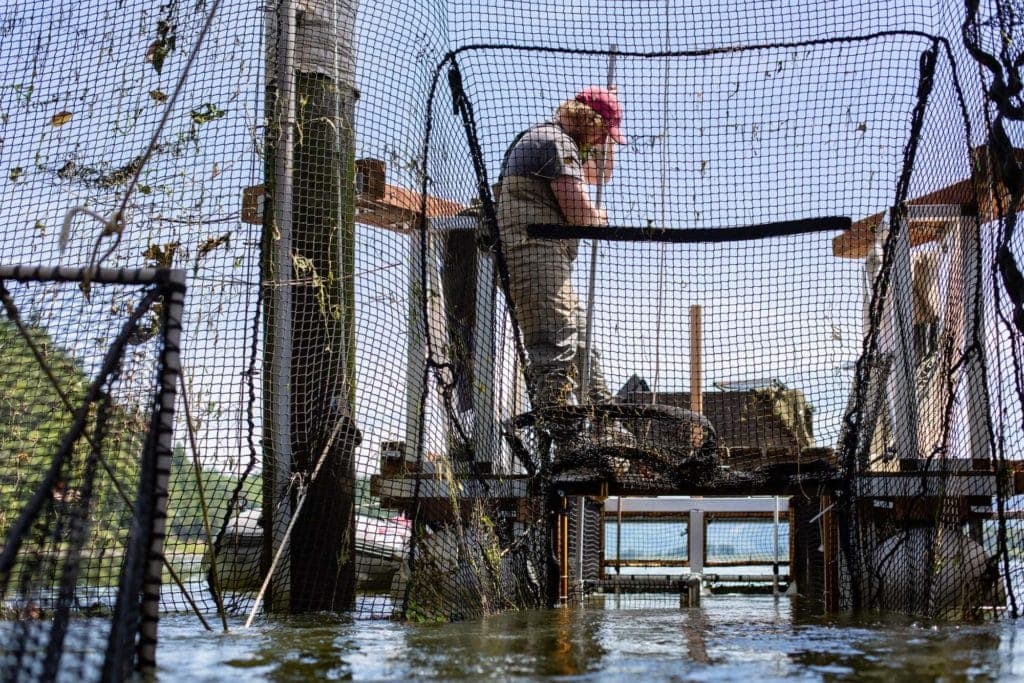
WFC constructed and monitored the performance of an experimental fish trap in the lower Columbia River during the spring and early-summer of 2019 with a modified passive spiller design. Specifically, objectives were to determine the effectiveness of the gear in capturing targeted salmonid and shad stocks for harvest and research while reducing mortality of released fishes relative to the performance of previously tested commercial gears in the lower Columbia River. Environmental covariates, CPUE, capture conditions, bycatch, immediate survival, and post-release survival were assessed. Similar to previous alternative gear tests, this study intended to achieve three major goals:
Assessing CPUE from the experimental trap and employing the Cormack (1964)-Jolly (1965)-Seber (1965) method for estimation of survival through paired mark-release-recapture, this study investigated the effectiveness of the alternative gear in capturing targeted stocks with improved survivorship of released fishes relative to previously tested commercial gears. Providing precise and unbiased estimates of cumulative survival to fisheries managers may enable implementation of low-impact stock-selective harvest and/or research tools for the rejuvenation of working waterfronts and the reduction of bycatch and hatchery impacts to wild salmonids.
This project received funding under continuation of award #NA17NMF4720255 from NOAA Fisheries Service, in cooperation with the Bycatch Reduction Engineering Program. The statements, findings, conclusions, and recommendations within the report are those of the authors and do not necessarily reflect the views of the funders.
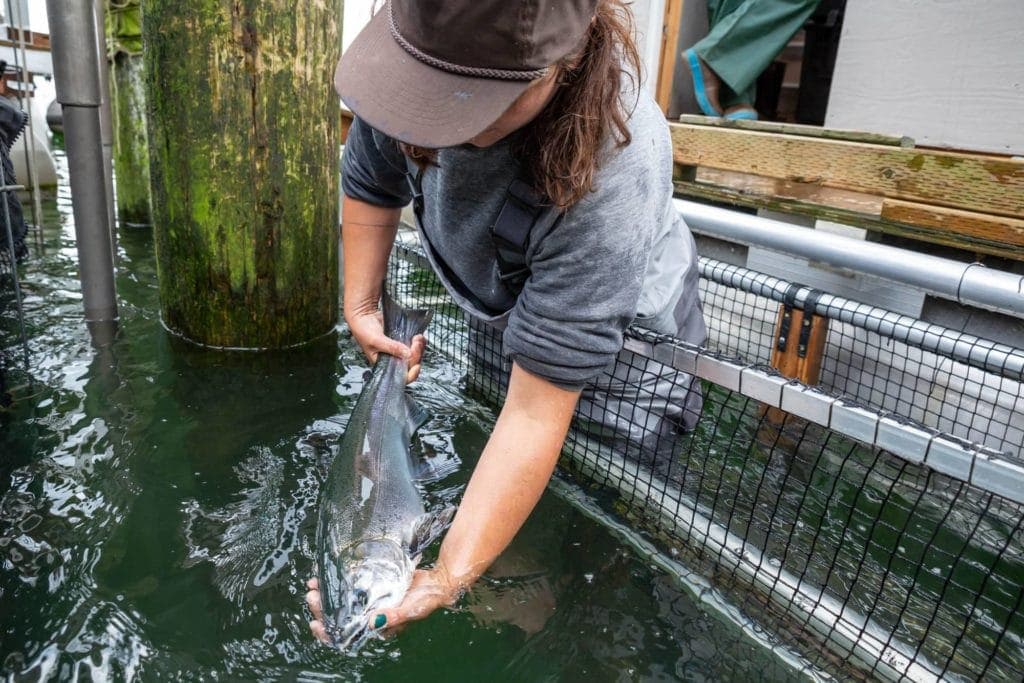
WFC, Washington Department of Fish and Wildlife (WDFW), and partners conducted a fisheries research, development, promotion, and marketing project to build the foundation for sustainably certified trap fisheries utilizing stock-selective harvest techniques and best business practices in the lower Columbia Sub-basin (Wahkiakum County, WA). Operating a modified fish trap from August through November 2019, the project had the following action plans:
Through the completion of these research and marketing experiments, WFC and partners have increased the availability of information necessary for WDFW to potentially implement fish traps as a legal alternative fishing gear in lower Columbia River commercial fisheries. Ultimately, the goal of this project was to inform the implementation process for alternative gears to increase sustainable harvest opportunities for hatchery-origin salmon while addressing both harvest and hatchery factors known to limit recovery of ESA-listed wild salmonids.
This project received funding under award #NA19NMF4270028 from NOAA Fisheries Service, in cooperation with the Saltonstall-Kennedy Grant Program.
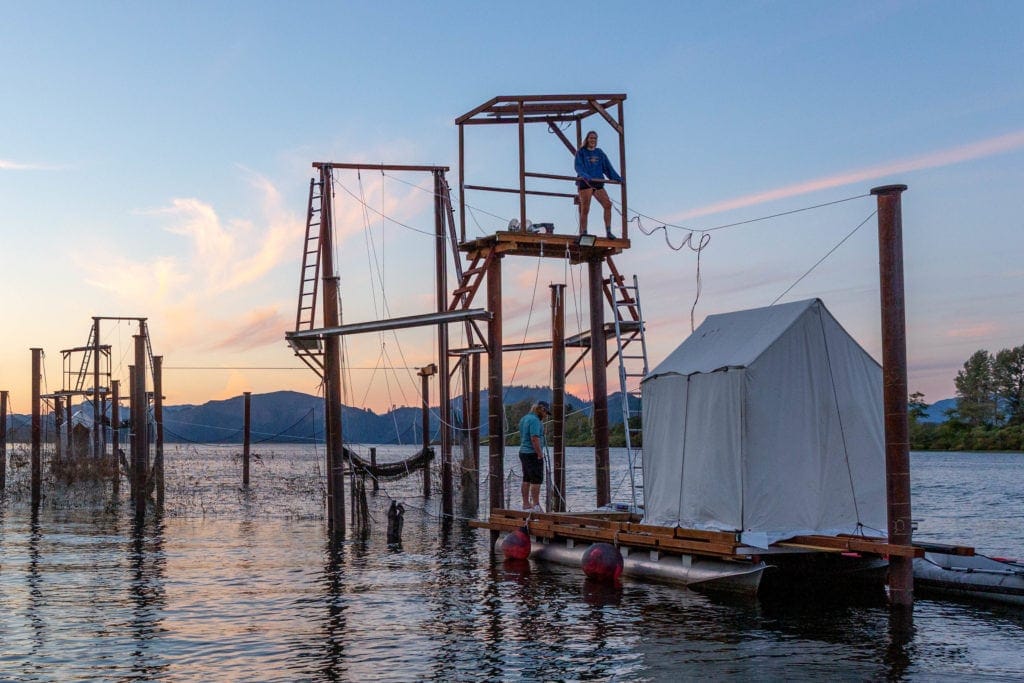
Building upon prior salmon trap research for the reduction of bycatch impacts to ESA-listed species and benefit of U.S fisheries, WFC and partners conducted the next steps necessary for fish trap testing and implementation. Specifically, objectives were to quantitatively evaluate the effectiveness of a substantially modified passive fish trap design in capturing hatchery salmon and reducing bycatch mortality of ESA-listed salmonids in a currently untested location within the lower Columbia River, OR. Similar to prior evaluations, this study had three major goals:
Employing a paired Cormack (1964)-Jolly (1965)-Seber (1965) methodology to estimate post-release survival for Chinook and steelhead and a net pen holding methodology to investigate post-release survival of coho, this study provided estimates of catch composition and bycatch mortality for a modified salmon trap. Results will help resource management agencies evaluate the utility of using alternative commercial gear in efforts to reduce bycatch and hatchery impacts for the recovery of ESA-listed salmonids and coastal fishing economies.
This project received funding under award #NA19NMF4720230 from NOAA Fisheries Service, in cooperation with the Bycatch Reduction Engineering Program. Funding was also provided by WDFW, ODFW, the Raynier Institute & Foundation, and Patagonia.

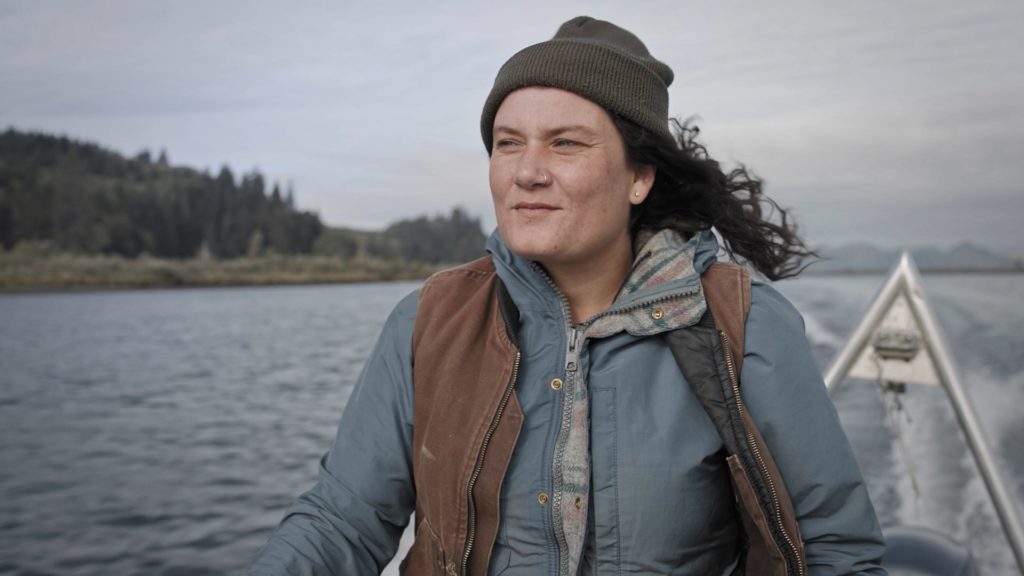
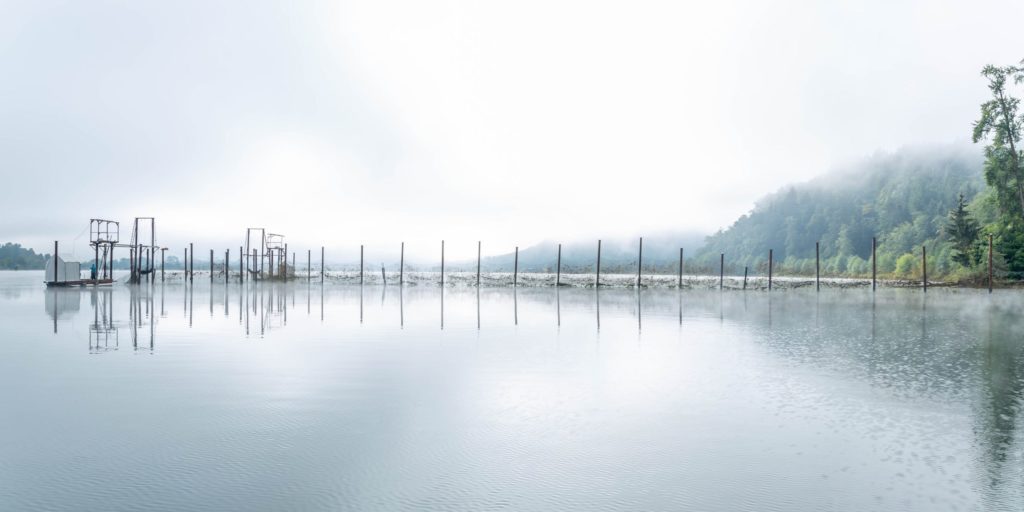
Lorem ipsum dolor sit amet, consectetur adipiscing elit.
Join our mailing list to recieve important updates on our work, the latest wild fish news, & opportunities to take action to support wild fish.
This site is protected by reCAPTCHA and the Google Privacy Policy and Terms of Service apply.
Wild Fish Conservancy is recognized as a 501(c)3 non-profit by the IRS